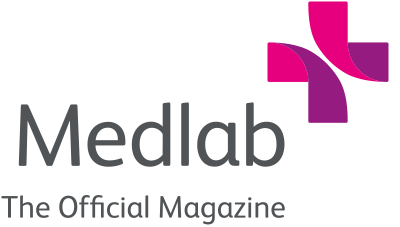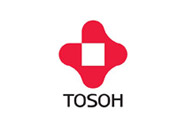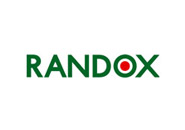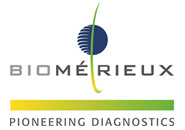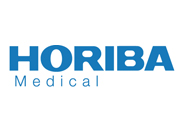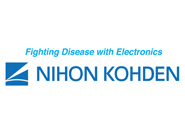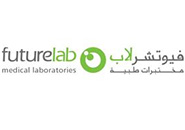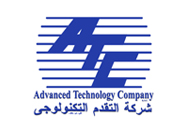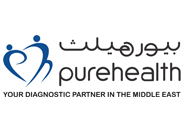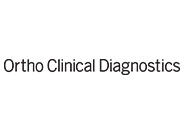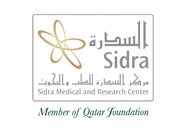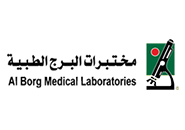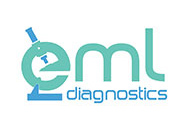The Impact of Laboratory Accreditation on Patient Care and the Health System
By Dr Laila AbdelWareth, MBBCh, FCAP, FRCPC, EMHCA; Chair Clinical Pathology, Medical; Pathology & Laboratory Medicine Institute, Cleveland Clinic Abu Dhabi
Accreditation is a procedure by which an authoritative body gives formal recognition that an organisation is competent to carry out specific tasks. As efforts to expand services continue, increased attention to quality, efficiency and cost effectiveness is paramount.
International accreditation services for clinical laboratories can be obtained from the College of American Pathologists (CAP), Joint Commission International (JCI), United Kingdom Accreditation Services (UKAS), and National Association of Testing Authorities in Australia (NATA), among others.
The College of American Pathologists (CAP) founded its accreditation programme 55 years ago in 1961. It includes more than 7,945 laboratories in the United States and over 430 laboratories in 50 different countries. The College’s Laboratory Accreditation Program (LAP) accredits the entire spectrum of laboratory test disciplines with the most scientifically rigorous, customised and objective checklist requirements.
The international standard ISO 15189 addresses the requirements for quality and competence in medical laboratories. It has its origins in the competency requirements of International Organization for Standardization/International Electro-technical Commission (ISO/ IEC) 17025 and the quality management system (QMS) requirements of ISO 9001. Fulfilling those requirements is objective evidence that the laboratory meets both the technical competence as well as the management system requirements that are necessary for it to consistently deliver technically valid results.
ISO 15189 was first introduced in 2005 with rapidly growing international adoption. In the Emirate of Abu Dhabi, ISO 15189 has been made mandatory by Abu Dhabi’s main health insurance company as well as Abu Dhabi Quality and Conformity Council (AD-QCC) for medical laboratories as of January 2017. In the UAE, Emirates International Accreditation Centre (EIAC), formerly known as Dubai Accreditation Department (DAC), is the signatory to International Laboratory Accreditation Cooperation (ILAC) in the UAE and offers accreditation services for clinical laboratories in the country.
The Impact of Laboratory Errors on Patient Care
Diagnostic testing typically involves multistep complex processes subject to multiple sources of error. According to Trevor Peter et al, studies in the United States and Europe have demonstrated that errors occur throughout the testing process, including the pre-analytical stage (sample collection, labelling, and transport); analytical stage (testing in the laboratory); and post-analytical stage (data management and reporting results). The majority of errors occur outside of the laboratory in the pre-analytical (46%–68%) and post-analytical stages (18%–47%). This does not include clinic-based errors that occur in deciding which tests to order and in the interpretation of test results, both areas of high error risk. The frequency of errors during the analytical stage is lower but remains significant, estimated to be between 7% and 12%, despite years of quality management regulation. In the United States, it is estimated that 6% to 12% of laboratory errors put patients at risk of inappropriate care and potentially of adverse events, whereas 26% to 30% of errors have a negative impact on other aspects of patient care.
Sources of errors include: lack of operator competence or failure to adhere to standard test procedures; incorrect reagent storage or expiration and instrument inaccuracy. Errors can also be introduced during sample collection, labelling and transportation, registration at the laboratory, or the transcription and delivery of results. Combined, these errors can lead to significant variance in the accuracy of the reported result, potentially leading, in some cases, to incorrect diagnosis, inappropriate treatment, or withholding of lifesaving therapy.
The Impact of Laboratory Accreditation on Patient Care
I still recall the day, 20 years ago, when I started working as a junior pathologist in the United Arab Emirates. At that time, no laboratory in the country had any sort of accreditation. In those days travelling abroad to seek medical treatment was not an uncommon practice. Fast forward to the present day, there are now 45 CAP accredited laboratories in the UAE, and many more accredited to the ISO 15189:2012 standard and the list is growing.
The latest report of the Institute of Medicine (IOM) titled “Improving Diagnostics in Health Care” is entirely focused on diagnostic errors and is intended to improve diagnosis in healthcare. Three of the eight goals provided by the committee creating the report have direct links to laboratory accreditation, namely goal number 2, enhance healthcare professional education and training in the diagnostic process; goal number 4, develop and deploy approaches to identify, learn from, and reduce diagnostic errors and near misses in clinical practice; and goal number 5, establish a work system and culture that supports the diagnostic process and improvements in diagnostic performance. Accreditation provides the perfect means to address these goals.
The variability of test results and the frequency of errors can be reduced by implementing and monitoring a comprehensive laboratory quality management system. This has included participation in regular proficiency testing (PT) which is a pre-requisite to any accreditation system for clinical laboratories. Accreditation provides verification that laboratories are adhering to established quality and competence standards deemed necessary for accurate and reliable patient testing and the safety of staff and the environment.
The impact of accreditation on patient care is paramount. As such these include: 1) increase in patient confidence and trust in the health care system; 2) decrease in the number of patients travelling abroad to seek medical treatment and accurate diagnosis; 3) increase in the rigour for licensing, competencies, training and education of laboratory professionals; 4) stimulation of innovation, research and novel discoveries. On that basis, health authorities in the United Arab Emirates are now insisting on accreditation as a means to improve patient care. With the introduction of accreditation there are more demands to hire well-trained and qualified technologists, invest in a solid infrastructure and push the bar to a higher level.
I am quoting below what Trevor Peter et al opine on the impact of accreditation: “Adherence to quality standards—and participation in accreditation programs that certify this adherence—can improve operational efficiency and customer service and reduce rates of laboratory errors. While there are limited published data that directly link accreditation to reduced laboratory errors and patient outcomes, studies have clearly shown that participation in PT programs, a key component of accreditation, leads to more accurate test results. For example, participation in just 3 rounds of an external CD4 PT program resulted in a 26% to 38% reduction in errors in the CD4 count among laboratories in resource-limited settings. When PT participation became a standard requirement in the United States, PT failures among laboratories were noted to decrease with successive PT challenges, as has the percentage of laboratories cited for deficiencies during successive inspection cycles”.
Having an international benchmark is another huge advantage of accreditation that can impact patient care. Take for example a simple quality metric such as specimen rejection and how tracking and addressing this single metric can affect timely and effective patient care. Many other indicators that are used to objectively measure the effectiveness of the quality management programme will have similar if not more significant effects on patient care. Cytological examination of cervical smears is another example where improving the quality of reporting are very much linked to better patient outcomes and benefits from early detection of cervical cancer.
Trevor Peter stressed on the fact that accreditation provides a mechanism by which patients, healthcare organisations, and governments can measure the performance of laboratories against international standards. Accreditation promotes trust in laboratories and confidence among authorities, healthcare providers and patients that laboratories and the results they produce are accurate and reliable. Successful laboratories can justify the resources they need to maintain quality. Increased resources, in turn, help improve laboratory capacity and may boost performance. The challenge for many laboratory networks today is to visibly improve their performance to a level at which this type of positive reinforcement begins to take effect.
Finally, cultivating a quality culture in any organisation requires time. The advantage of accreditation lies in its utility as a transformative tool for any laboratory or organisation seeking performance excellence. Continuous improvement follows as a natural progression leading to stepwise and steady improvement in quality, performance and outcomes. Trevor Peter et al stated that accreditation is likely to have spillover effects on the performance of other areas in the healthcare system. Laboratory-driven improvements can help improve healthcare management more broadly. For example, improved supply chain requires improved forecasting skills and better inventory management and consumption-tracking systems. The process of upgrading these systems at a national level could also benefit systems for drug supply chain. Furthermore, the example of laboratory accreditation, with its established and structured processes, defined standards, and accrediting bodies, can demonstrate the benefits of systematic performance evaluation and ongoing quality improvement and could catalyse the impetus to improve patient care across the entire health care system.
Conclusions
Accreditation provides perfect means to building quality medical laboratories, and helps in improving diagnosis in healthcare and enhances patient safety. Health authorities are encouraged to consider accreditation as one of the means to improve patient safety and patient care. Accreditation programmes can help drive improvements in the management of individual laboratories and laboratory networks and may also have positive spillover effects on the performance in other sectors of the healthcare system.
